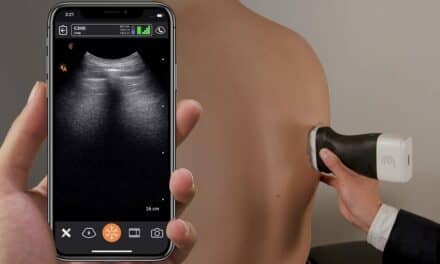By Bryan Christiansen
Thanks to continuous advancements in technology, as well as our growing understanding of diseases, ailments that typically resulted in death in the last century are now being managed with minimal discomfort to patients. Much of these advancements are due to innovations that enable medical personnel to take a proactive approach to managing patients’ health, such as the Internet of Medical Things.
Whether via patient care and monitoring, medical devices and equipment, or connectivity between physicians and patients, the Internet of Things, or IoT, is playing a significant role in healthcare. Here’s how.
Remote Monitoring via Wearables
Citing forecasts by market research firm Euromonitor, CNBC reports that different kinds of “wearables” will become the world’s best-selling consumer electronics product after smartphones. Sales are even expected to exceed laptops and televisions.
For the health sector, wearable technologies allow physicians to monitor patients’ potentially dangerous conditions, such as diabetes, atrial fibrillation, depression, heart failure, etc. They come in the form of armbands, glasses, patches, chest straps, and footwear—and they can be used to measure heart rates, blood pressure, blood sugar levels, and more.
This kind of remote monitoring is becoming a critical tool in health management because chronic conditions contribute greatly to higher healthcare costs. Although this industry is still in its infancy—and much more research needs to be done—it’s generally accepted that the possibilities are huge.
Remote monitoring can also lower healthcare costs in other ways. For instance, it will reduce the need for in-hospital evaluations, hospital admissions, and follow-up visits.
Remote Medical Rescue
In Chicago, MedEx Ambulance became the first U.S. ambulance service to successfully use IoT in the form of Google Glass to visually connect paramedics in the field with doctors. They started this in collaboration with Rhode Island Hospital and Advocate Illinois Masonic Medical Center.
When their EMTs and paramedics wear the glasses, it enables them to stream images and video from a patient’s location to an awaiting emergency room. Physicians on duty can then view detailsof the trauma before the victim’s arrival and plan treatments accordingly. Such capabilities can save valuable time—and lives!— in critical accidents and other emergencies.
Predictive Maintenance
So far, the IoT in healthcare is focused mainly on monitoring patients, but what about applying it to the monitoring and maintenance of physical assets?
As HTM professionals, you’re well aware that the healthcare industry is highly regulated and procedure-driven. Also, medical personnel are constantly under pressure to preserve life while maintaining profitability. Certainly, they do not need the added inconvenience of equipment failure, especially during high-risk procedures such as surgeries.
That’s where predictive maintenance (PdM) comes into play. PdM techniques are already being used in several industries to preempt failure in critical assets by monitoring the running condition of the equipment. Through IoT technology, the maintenance team at any location can receive alerts about a potential machine failure well in advance.
This approach, combined with a modern computerized maintenance management system, places users in a better position to save time and maintenance costs because tasks are performed only when due, rather than to a calendar-based schedule.
In addition, PdM is the maintenance strategy of choice for operations that require consistently high machine uptime. In fact, up to 95% of 268 companies interviewed in a study attribute their uptime improvements to PdM.
Physical Security and Access Control
Every hospital strives to make patient and staff safety a top priority because of the wide range of threats they could face. Unfortunately, the traditional manual security and access control measures of the past have failed time and again. Therefore, it’s necessary to explore new frontiers in security surveillance.
Thanks to IoT technology, security professionals can now:
- Adopt active, rather than passive, protection. Instead of playing back video footage to investigate incidents after the fact, modern network video analytics empowers hospitals with real-time reporting of potential threats for prompt intervention.
- Remotely monitor life-saving systems—including fire alarms and other safety installations
- Segregate access control by creating specific access control authorizations and intelligent door-locking systems that restrict access for visitors, staff, patients, and medical staff
In addition, most modern surveillance and access control systems can be set up to send mobile alerts in emergency situations.
Looking Ahead
IoT continues to transform every industry imaginable in big ways. With the increased interest in this technology and the sustained pace of research and innovations, it is expected that we will continue to see many more noble applications in healthcare.
Also, the ease of usage means that patients will be more involved and better educated about their health than in years’ past. Perhaps a time will come when preventive medicine, rather than emergency procedures, will be the norm. And we should hope so since such innovations will indicate a better and healthier future for all.
Bryan Christiansen is the founder and CEO at Limble CMMS. Questions and comments can be directed to 24×7 Magazine chief editor Keri Forsythe-Stephens at [email protected].





